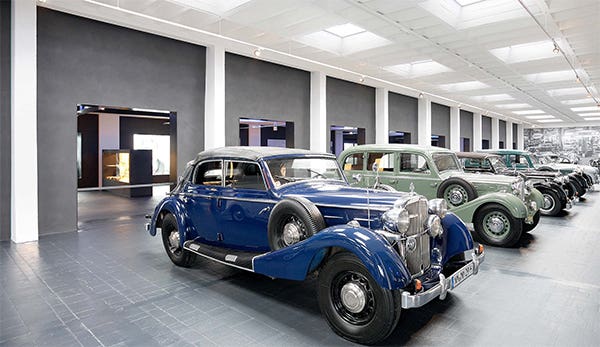Old Cars Q&A: 2021 no. 8
Kit Foster answers all your old car questions. This time he speaks on Carter Thermo Quad carbs, carburetor adapter plates, fresh tires for a Pantera, whitening those whitewalls and MoPar engine blocks.
Q. In response to Don Rush’s question on the Carter Thermo Quad Carburetor (Dec. 31, 2020), I used to be a tune-up guy at a Chrysler-Plymouth dealership and have rebuilt numerous Thermo Quads. Many swear at TQs. The TQ has a few “tricks,” and once you learn the tricks, they will work fine.
It is important to follow all the directions stated in the rebuilding kit to the letter. This includes the float levels, which must be exactly spot-on. Additionally, regarding floats: after a couple of years, some of the plastic floats may become saturated with fuel and sink. The plastic float bodies are subject to warpage, but I have never seen one crack. I believe Mr. Rush’s problem stems from the O-rings near where the jets are located. Many forget to remove these O-rings when the carburetor is disassembled. Carburetor cleaner will cause them to deteriorate. The O-rings seal the fuel pick-up tubes to the bottom of the float bowl. There is also a check valve near the accelerator pump output jet. Assuming the float bowl isn’t warped, and these items are properly in place and set to the proper specifications, the carburetor troubles should go away. — John Bellah, La Habra, Calif.
A. Thank you for sharing your knowledge and experience with the Thermo Quad, which is entirely outside my experience.
Q. I have a 1959 Chevrolet with a totally original 283 engine, except that I use an Edelbrock 1406 carburetor. I have to use an adapter plate to mate the carburetor to the intake manifold. The adapter covers the intake manifold holes that would normally allow exhaust gas to circulate under the carburetor to help mitigate carburetor icing. This is not a problem during summer and I know everyone wants a cool carburetor for more power.
However, during the cool, cold, damp days here north of Seattle — when the humidity is high — carburetor icing becomes enough of an issue that to be safe, I have to run the engine until I can tell it’s beginning to ice and then shut it down. After about two or three minutes, enough heat has transferred to the carburetor that icing probably will not return. If I don’t shut down the engine, it will eventually just choke down and die on its own — not great in traffic. Of course, once the radiator is hot, the air blowing back onto the carburetor keeps everything toasty. Even then, if driving at highway speeds in just the right conditions, this same engine — even with its original stock carburetor — would ice if the carb heat circuit was clogged.
Does anyone know of an adapter that will fit, but still utilizes the carburetor heat circuit? I contacted Edelbrock about the problem a few years ago. Their rep told me there was nothing they could do. I’ve contemplated modifying an adapter plate so that the exhaust gas would travel under the carburetor, but I’m not sure that the adapter plates available are designed to take the heat of the exhaust. — Arthur Newberry, via email
A. I’m familiar with the problem, but only in a British car with exposed SU side-draft carbs that hung out away from the engine. In single-digit temps, it was nearly undriveable in my New England habitat. British cars were simply not designed for North American winters. Readers, has anyone else had this situation with a setup similar to Arthur’s and mitigated it without moving to a warmer climate?
Q. I have a 1972 Pantera. In the mid-1980s, I rebuilt the original engine and put new tires on, Pirelli Cinturato P7s. which were very expensive. I only painted the car a few years ago and it has about 100 miles on it. The surface on the tread is cracked. I wish I had waited on the tires. Because of their condition, I am afraid to drive it. — Harold Drake, Torrance, Calif.
A. You are wise. As I’ve said before, treat your car to new tires when it’s ready to be driven, and then enjoy it often. Tires deteriorate whether you use them or not.
Q. Sometime in the past, one of your contributors offered this solution to clean whitewalls: Mix Lestoil and bleach 50/50 in a squirt bottle and use a whitewall brush, He said this would get those whitewalls “white as a sailor’s dress whites.” It will. I use it regularly. — Wallace Mitchell, Jackson, Mich.
A. Thanks for that. Previous suggestions have included Comet cleanser and Brillo soap pads. This method sounds easier to administer, though.
Q. Years ago, when I was in the Navy and a diehard MoPar fan, one of my shipmates from Michigan said that Chrysler engines were cast at the Ford foundry. If this was true, which engines were they making there and does the practice continue to this day? — Donald Chepurna, Waterbury, Conn.
A. It’s well known that the Dodge Brothers furnished castings for early Ford cars, before Henry constructed his Rouge complex in 1917. I’m not aware of Ford foundries supplying MoPar blocks, though. Readers?
To submit questions to this column: E-mail
oldcars@aimmedia.com or mail to: Q&A, Old Cars,
5225 Joerns Drive, Suite 2, Stevens Point, WI 54481.
*As an Amazon Associate, Old Cars earns from qualifying purchases.








